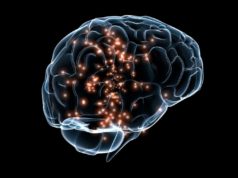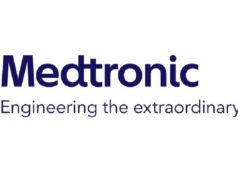
The proliferation of new technologies and advancements in the neurosciences space has showed little sign of slowing in recent years and—as John Rolston (Boston, USA) avers in this guest piece for NeuroNews—patients with brain function diseases may well reap the benefits of such progress in the near future.
Several subspecialties exist within neurosurgery to treat disorders that affect the nervous system. Functional neurosurgery focuses on diseases of brain function, such as epilepsy, Parkinson’s or essential tremor. For many patients with these diseases, the brain might look normal on magnetic resonance imaging (MRI)—even when the disease is causing invisible damage. For example, surgeons operating on brain tumours might be able to clearly identify a tumour invading the brain while brain function diseases, like epilepsy, are not clearly visible.
In the last 20 years, considerable advances have occurred around the techniques, technologies and approaches devoted to functional neurosurgery. These combined advances helped lead to improved stereotactic accuracy, better outcomes, a lower rate of complications and an increasing number of patients benefitted.1 To treat brain function diseases, functional neurosurgeons often turn to deep brain stimulation (DBS), a treatment method using electrodes to change the patterns of activity in the brain to restore a more normal function.
DBS for addressing brain function diseases
Brain stimulation is considered the standard of care for many brain function diseases. First approved by the US Food and Drug Administration (FDA) as a treatment for tremor in 1997, DBS was more recently approved as an epilepsy treatment option in 2018.1,2 Patients eligible for DBS experience symptoms despite the use of medications and other treatments. For example, DBS could be considered when a medication loses effectiveness, and patients begin to experience a fluctuation in their symptoms or loss of ability to perform day-to-day functions. DBS then becomes a treatment option.3
Most DBS devices consist of electrodes implanted inside specific deep brain structures, and the electrodes are then connected to a pacemaker-like machine called a pulse generator that is implanted on the chest wall via a subcutaneous wire.4 However, some versions can be placed directly in the skull. Stimulation parameters are then relayed by a computer to the pulse generator, assigning proper amplitudes, frequencies, and pulse width.5
DBS can stop the symptoms of many diseases and can adapt with the patient over time, and as the disease changes. Recent innovations are seeing promising findings from pulse generator systems that will be able to sense activity from the brain and adapt minute by minute, allowing for customisation for each patient’s disease and leading to a more effective treatment option over time.
What is next in functional neurosurgery?
The clinical use of DBS is among the most important advances in clinical neurosciences over the past two decades, and physicians are looking into the possibility of expanding the treatment option for other applications.5 In fact, researchers are currently conducting clinical trials exploring DBS as a treatment for obsessive-compulsive disorder (OCD), depression, and loss of control (LOC) eating.
Closed-loop DBS also enables potential new insights for clinicians. This procedure offers the ability to listen to brain signals, detecting when a patient’s mood might be changing or when their Parkinson’s symptoms might be flaring up, and allowing for adjustment in the electrodes being distributed on a minute-to-minute basis.
Focused ultrasound is also at the forefront of discussion, as it offers an incisionless option where areas of the brain that are overactive or causing problems are removed using sound waves. Focused ultrasound is US FDA approved for treatment of essential tremor and Parkinson’s disease, and researchers are also measuring the success of this treatment for Alzheimer’s and OCD.
Another exciting advancement is the evolution of cell and gene therapy—something that neurosurgery researchers have been studying for some time but can now expand their dataset due to the ability to create stem cells, sometimes even using the person’s own tissue. An upcoming clinical study at Brigham and Women’s Hospital will explore how induced pluripotent stem cells can be used to treat Parkinson’s.
We are seeing an acceleration in advances throughout functional neurosurgery, offering physicians greater numbers of safe and effective treatment options for their patients to achieve the best outcomes and return to living active lives.
References:
- Gardner J. A history of deep brain stimulation: Technological innovation and the role of clinical assessment tools. Soc Stud Sci. 2013; 43(5): 707–28.
- FDA. Premarket Approval (PMA) Database. Medtronic DBS System for Epilepsy. Retrieved from accessdata.fda.gov/scripts/cdrh/cfdocs/cfpma/pma.cfm?id=P960009S219.
- Sullivan C R P, Olsen S, Widge A S. Deep brain stimulation for psychiatric disorders: From focal brain targets to cognitive networks. Neuroimage. 2021; 225: 117515.
- Fariba K A, Gupta V. Deep Brain Stimulation. In: StatPearls [Internet]. Treasure Island (FL): StatPearls Publishing; 2023. Available from: ncbi.nlm.nih.gov/books/NBK557847/. Updated: 24 Jul 2023.
- Lozano A M, Lipsman N, Bergman H et al. Deep brain stimulation: current challenges and future directions. Nat Rev Neurol. 2019; 15(3): 148–60.
John Rolston is a neurosurgeon and neuroscientist at Brigham and Women’s Hospital in Boston, USA. His key research areas of interest include epilepsy surgery and movement disorder surgery.
DISCLOSURES: The author declared no relevant disclosures.













